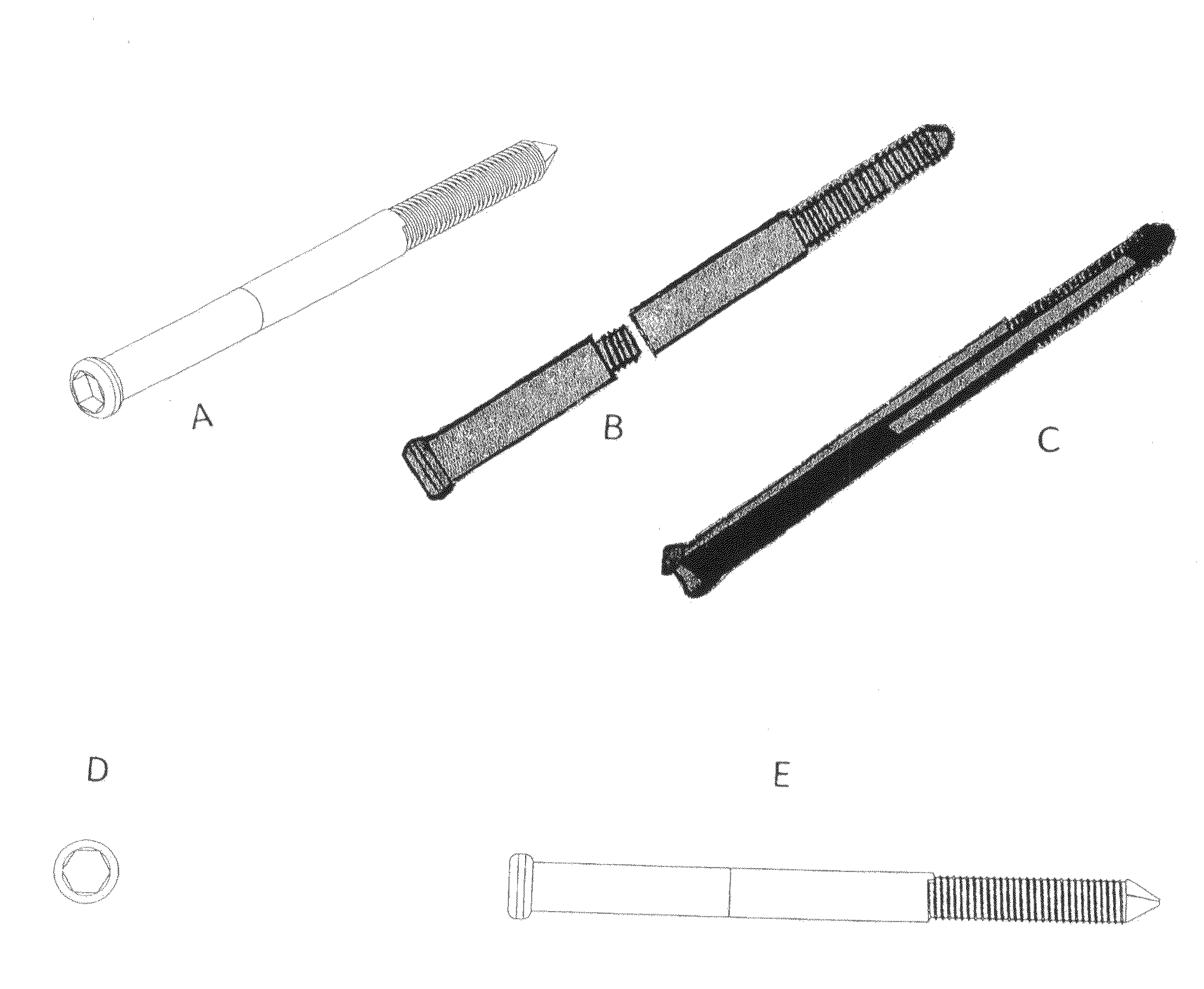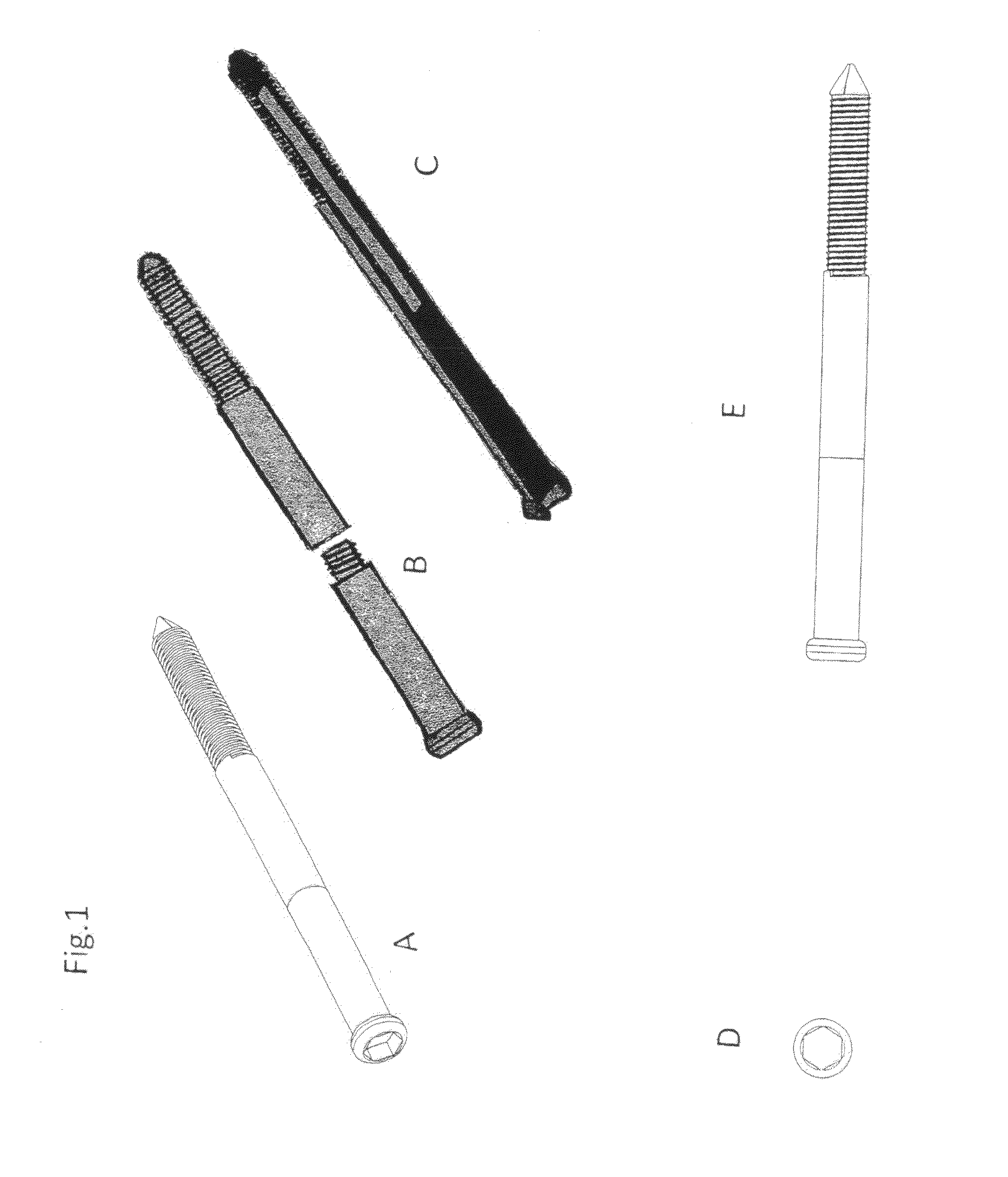Poly-porous hollow screw for target delivery of growth factors and stem cells:the design and potential clinical application
a technology of growth factor and stem cells, applied in the direction of powder delivery, peptide/protein ingredients, internal osteosynthesis, etc., can solve the problems of difficult surgical fixation of the femur neck fracture, difficult solo vascular supply, and inability to recover properly 5-10% of fractures, etc., to facilitate bone healing, easy to disrupt solo vascular supply, and mechanical strength of the screw increase
- Summary
- Abstract
- Description
- Claims
- Application Information
AI Technical Summary
Benefits of technology
Problems solved by technology
Method used
Image
Examples
example 1
[0058 femur neck fracture is one of common fracture treated by the orthopaedic surgeons. Fixation of the displaced femur neck fracture remains extremely challenging. In addition to the above mention healing disadvantage of the intracapsular fracture. Femur neck fracture has character of the high stress on the fracture site, poor quality of the bone and lower healing power due quiescence of the stem cells in aged individual. The designed screw as showed in figurel has larger diameter 7.3 to bear the high stress, long shaft smooth screw easy to cross the fracture side. The screw tip is round to avoid the cutting out. Partially cancellous thread allowed the fracture fragment sliding and impaction to improve chance of the healing and screw purchase in the distal fragment (FIG. 1). The core matrix for femur eck frature includes BMPs, stem cells as well as VEGF to facilitate the re-vascularization and bone healing. On the other hand, BMP and stem cells in screw also encourage the bone in-...
example 2
[0059] Talus neck fracture is also intra-articular fracture usually resulted from high energy injury. Thus, fracture can occur in both the young and elderly. Since the talus is small. The force required to maintain the fracture from displacement is relatively small. Thus, 3.5 mm screw was chosen (FIG. 5). The screw is also partially threaded to provide the fragment compression. The cortical screw design may be used for young patient who had good bone quality. Cancellous screw is used for elder patient with poor bone quality. Similarly, Stem cell can be eliminated from core matrix for young patient because they have the good reserve of stem cell for rebusted osteoinductive activity. Similar construct can be used for Jone's fracture
example 3
[0060 Scaphoid is very unique. Articular cartilage cover most of the surface the scaphoid. Thus, any screw prominent with damage joint. Thus, a Herbert screw design was used (FIG. 2). Since the scaphoid is small, 2.0 mm screw is recommended. Due to limitation of chamber volume, the stem cell will not used. Bt VEGF will used to improve vasculization.
[0061]Example 4. Interference screw is the primary fixation methods for the reconstruction surgery for sport injury. Post-surgery rehabilitation is very lengthy take about 6 months to 1 year. Graft failure due to using bioactive interference screw (use BMP2, or BMP7 if bone to bone healing, use BMP12 if ligament or tendon to bone healing), the growth factors and stem cells can speed up the healing process. This may reduce the risk of the graft failure and encourage the athlete return to game earlier. The interference screw is taper shape with cancellous thread. This would increase the pull out strength of graft. The delivery chamber spans...
PUM
| Property | Measurement | Unit |
|---|---|---|
| porosity | aaaaa | aaaaa |
| pore size | aaaaa | aaaaa |
| diameters | aaaaa | aaaaa |
Abstract
Description
Claims
Application Information
 Login to View More
Login to View More - R&D
- Intellectual Property
- Life Sciences
- Materials
- Tech Scout
- Unparalleled Data Quality
- Higher Quality Content
- 60% Fewer Hallucinations
Browse by: Latest US Patents, China's latest patents, Technical Efficacy Thesaurus, Application Domain, Technology Topic, Popular Technical Reports.
© 2025 PatSnap. All rights reserved.Legal|Privacy policy|Modern Slavery Act Transparency Statement|Sitemap|About US| Contact US: help@patsnap.com



